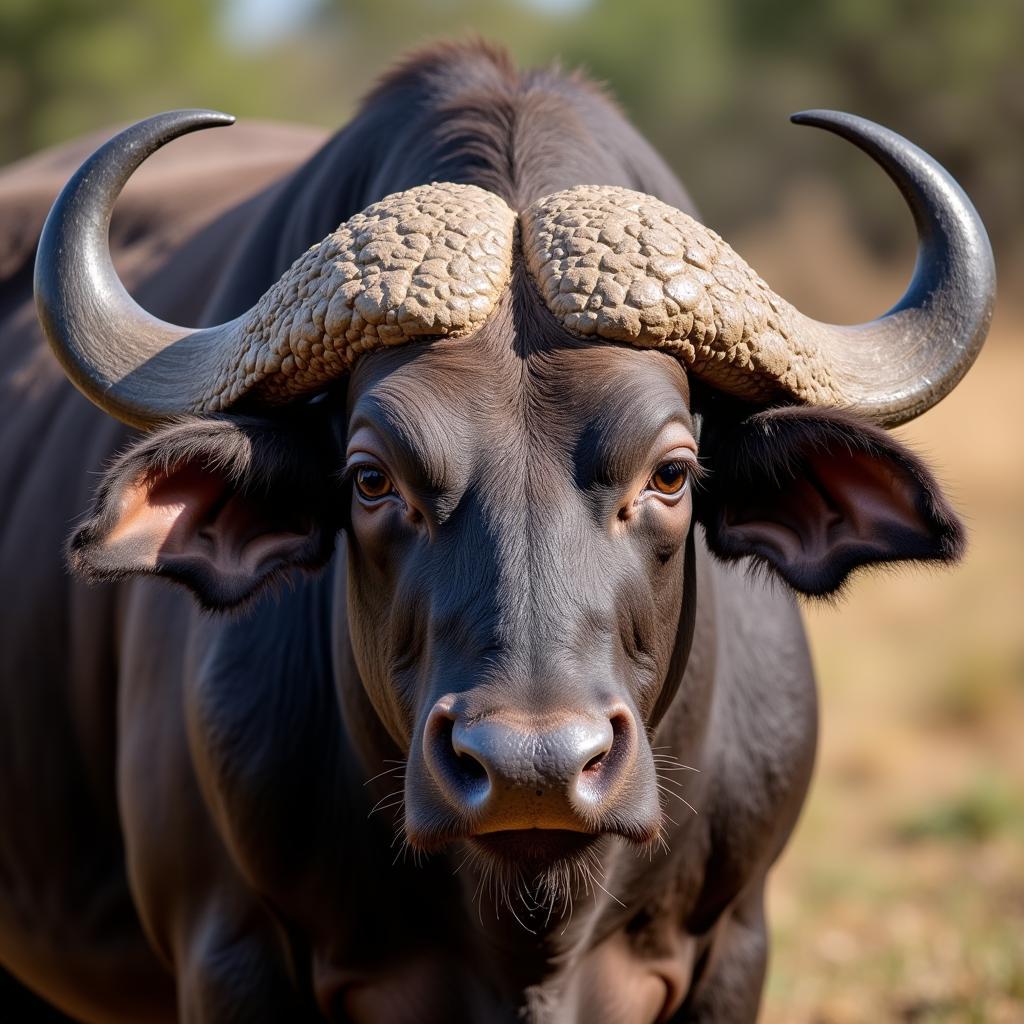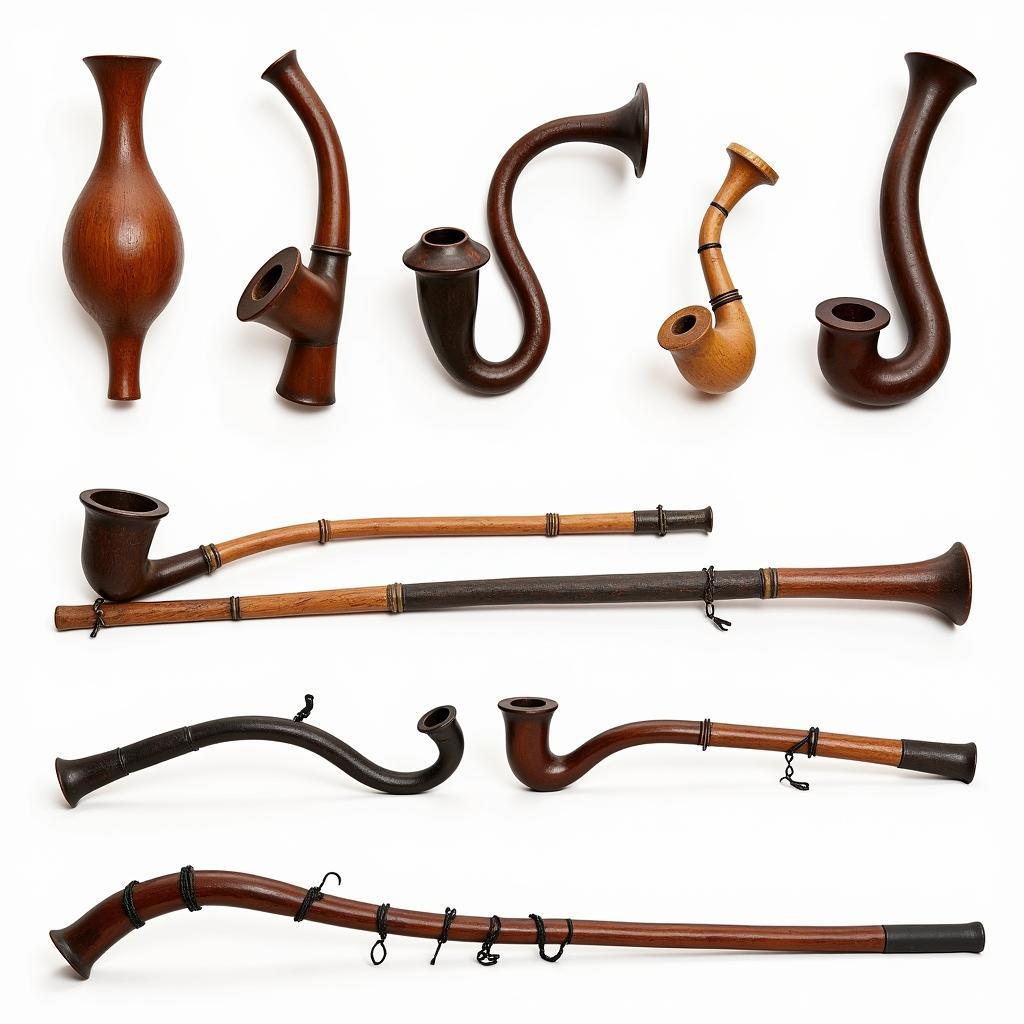The Majestic African Cape Buffalo: A Symbol of Power and Resilience
The African Cape Buffalo, a creature of immense power and resilience, roams the savannas and woodlands of sub-Saharan Africa. These imposing bovines are a key part of the African ecosystem and a sight to behold for any wildlife enthusiast. Their impressive horns, formidable size, and complex social structures make them a truly fascinating species. Let’s delve into the world of this iconic African animal.
Understanding the African Cape Buffalo’s Habitat and Behavior
African cape buffalos are highly social animals, living in herds that can range from a few dozen to several hundred individuals. These herds are complex social structures with intricate hierarchies and strong bonds between members. Within the herd, you’ll find females, their young calves, and older males. Younger males often form bachelor groups before eventually joining or establishing their own breeding herds. Their habitat preference centers around areas with access to water and grazing, making them a common sight near rivers, swamps, and grasslands. They are primarily grazers, consuming large quantities of grass each day.
The social dynamics of African cape buffalos are fascinating. They display remarkable cooperation and coordination, especially when facing threats. When a predator attacks, the herd often forms a protective circle around the vulnerable calves, showcasing their strong sense of community.
The Distinctive Features of African Cape Buffalos
The African cape buffalo is instantly recognizable thanks to its massive horns. These horns form a thick boss, or shield, across the forehead, which is a unique characteristic of this species. The size and shape of the boss can vary depending on the subspecies and the individual animal. Another key feature is their thick, dark hide, which provides protection against both predators and parasites. Their large size and robust build further contribute to their imposing presence.
 Close-Up of African Cape Buffalo Horns
Close-Up of African Cape Buffalo Horns
What distinguishes the African cape buffalo from other bovids is their complex social behavior and their formidable reputation as one of Africa’s most dangerous animals. They are known for their unpredictable nature and their tendency to charge when threatened, making them a formidable opponent even for large predators like lions. You can learn more about the confrontations between these two powerful creatures at african elephant vs cape buffalo.
The Role of the African Cape Buffalo in the Ecosystem
African cape buffalos play a vital role in the African ecosystem. As grazers, they help shape the landscape and influence plant diversity. Their dung also provides nutrients for the soil, supporting the growth of vegetation. They are also a significant food source for large predators, contributing to the balance of the food chain.
What are the main predators of the African Cape Buffalo?
Lions, crocodiles, and hyenas are the primary predators of African cape buffalos. However, due to their size and defensive capabilities, successful predation often requires coordinated efforts from these predators.
african cape buffalo facts offer more insights into their lives.
How does the African Cape Buffalo impact the environment?
Their grazing habits influence vegetation patterns and their dung fertilizes the soil, contributing to a healthy ecosystem.
Conservation Status and Challenges
While African cape buffalos are not currently considered endangered, they face ongoing threats from habitat loss, poaching, and disease. Conservation efforts are crucial to ensure the long-term survival of this magnificent species. Learn more about the fascinating world of African wildlife at african deep. For more photos of these powerful animals, explore our gallery of african bison pictures.
 African Cape Buffalo Herd at a Waterhole
African Cape Buffalo Herd at a Waterhole
“The African cape buffalo is a symbol of the wild, untamed spirit of Africa. Their resilience and social bonds are a testament to the power of nature,” says Dr. Anika Mosi, a renowned wildlife biologist specializing in African megafauna.
“Protecting the African cape buffalo means protecting the entire ecosystem they inhabit. Their presence is vital for the health and balance of the African savanna,” adds Dr. Joseph Ngugi, a leading conservationist working in East Africa. You can also find more information about these incredible animals at african cape buffalos.
Conclusion: The Enduring Legacy of the African Cape Buffalo
The African cape buffalo, with its imposing presence and complex social dynamics, remains an iconic symbol of the African wilderness. Understanding their behavior, ecological role, and the challenges they face is crucial for their continued survival. We must continue to support conservation efforts to ensure that future generations can witness the majesty of the African cape buffalo in its natural habitat.
FAQ
- What is the average lifespan of an African cape buffalo? Around 20 years in the wild.
- What is the main difference between the African cape buffalo and the American bison? Their horn structure and social behavior.
- Are African cape buffalos dangerous to humans? Yes, they are considered one of the most dangerous animals in Africa.
- What is the collective noun for a group of African cape buffalos? A herd or a gang.
- What is the scientific name for the African cape buffalo? Syncerus caffer.
- How much does an African cape buffalo weigh? Between 900 and 2,200 pounds.
- What do African cape buffalos eat? Primarily grass.
Other Common Questions:
- What are the different subspecies of African cape buffalo?
- How do African cape buffalos communicate with each other?
- What is the impact of climate change on African cape buffalo populations?
For more information on African wildlife and culture, explore other articles on our website.
Need help? Contact us 24/7: Phone: +255768904061, Email: [email protected], or visit us in Mbarali DC Mawindi, Kangaga, Tanzania.

